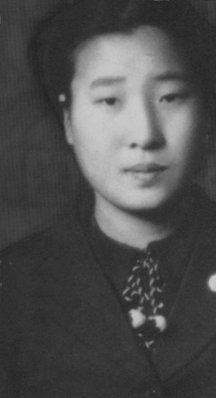Theresa Hak Kyung Cha
Born: 1951; Death: 1982
“Mother, you are eighteen years old. You were born in Yong Jung, Manchuria and this is where you now live. You are not Chinese. You are Korean . . . You live in a village where other Korean exiles live. Same as you. Refugees. Immigrants. Exiles. Farther away from the land that is your own. Not your own any longer.”
– An excerpt from Dictee by Theresa Hak Kyung Cha
Theresa Cha’s autobiography, Dictee, is widely used in art history, women’s studies and ethnic studies classes, but relatively few have actually seen her work until now. Many know of her death at the hands of a stranger — a serial rapist who worked as a security guard — who raped her and beat her to death. Dictee was published posthumously just weeks after the 33-year-old’s murder in 1982.
“The Dream of the Audience: Theresa Hak Kyung Cha (1951-1982),” an austerely beautiful and constrained exhibit of works by the Korean American artist, opened last week at the Henry Art Gallery on the University of Washington campus.
This is the second stop for the exhibit, which was originally put together for the Berkeley Art Museum. A major exhibit with many supporters including The Andy Warhol Foundation for the Visual Arts and The Korea Foundation, it is the first major public exploration of the Korean American artist considered by some to have been a pioneer in conceptual and performing art.
Cha’s body of work consists of video, film, recordings of performances, documentation, mail art, works on paper and three-dimensional pieces some might call sculpture or multimedia.
Henry Art Gallery’s Robin Held, the curator, however, calls works like “Surplus Novel, 1980,” a hand-sized porcelain jar holding thread and typewritten paper, “hybridities.” They’re words with elements from different languages or combinations of unlike or unrelated things, she explains.
Indeed, Cha was an artist of language. She imaged sounds on film and video and carefully arranged words using French, English or Korean, of all which she spoke fluently.
Moving from video to video or lifting up the headphones from their neat museum saddles, the listener hears her whisper repeatedly that she wants to discover what being was/is before the word is made/spoken. Cha wanted to understand herself and her audience as they experienced, listened, watched and heard her work.
Glimpses of this process are available in the 1975 work “A Ble Wail,” found at the Henry. The 28 photographs are hung as stills in the current exhibit, but were performed originally at a University of California at Berkeley gallery. She said in an unpublished manuscript, “I want to be the dream of the audience.” The performance was done behind a scrim using the sounds of ripping paper and small percussion instruments. The room is full of candles. One performer, Cha, is dressed in a full-length robe.
In another piece, Cha calls the audience a “distant relative.”
In part because the youthful Cha died so suddenly, and partly because of the profound level of the artist’s own journey of self-exploration, we leave the exhibit with more questions than when we started. As with other artists in that period, Cha was deeply involved in not only making art but also defining the artist and the audience experience. For her, the artist wasn’t only a performer, but also a shaman.
“The artist’s path is close to that of an alchemist in that his/her path is that of a medium … His/her vision belongs to an altering, of material, and of perception. Through this attempt, the perception of the audience has the possibility of being altered …,” she wrote.
Born in 1951 in Korea, she moved with her family to the San Francisco Bay Area in 1964. She received four degrees in comparative literature and art from UC Berkeley. She also studied in France with important film theorists of the day.
Cha did not tell stories in a linear way. She was instead fascinated with image as pure image, words as singular words and the uncertainty of memory. And it is in memory that she explored her Korean heritage — not as a personal tale but as objective material often told in the third person. She explored being Korean as an aspect of self from a psychological point of view.
By utilizing her own psyche to examine the immigrant experience, she has become important not only to Asian students but to many seeking to understand themselves beyond ordinary linguistic constraints.
Her art has been called transformative because she defined the understanding of space so carefully, as shown in the 1978 videos “Mouth to Mouth” and “Passages Payages,” rather than the space itself.
A transformational quality elevates “Dream of the Audience” beyond the sounds resonating through the aural world of the gallery and the aging newsprint of her works on paper, seeping gently into our awareness. Cha’s voice resonates universally because she embraced what was alien in both a political and emotional sense in order to find redemption.
Other programs in conjunction with the exhibition include a screening of her film “Exilee,” on a specially constructed stage based on Cha’s original design, at Richard Hugo House in Seattle from Jan. 2 to Jan. 11. There will also be a presentation by the Seattle Humanities Forum entitled “From the Missing: A Conversation on Theresa Hak Kyung Cha,” featuring a panel of scholars, including Yong Soon Min, who knew Cha personally, at the Henry Art Gallery’s auditorium on Jan. 16; and a special interdisciplinary class called “Re-framing Language” that will use Cha’s work as a springboard for further discussion on Feb. 1 and Feb. 8 at the Henry Art Gallery and Richard Hugo House. “The Dream of the Audience: Theresa Hak Kyung Cha (1951-1982)” runs now through March 2 at Henry Art Gallery, located at 15th Avenue Northeast and Northeast 41st Street in Seattle.
For more information, visit www.henryart.org.
By Ann-Marie Stillion (annmarie@nwasianweekly.com), Northwest Asian Weekly, December 14, 2002

